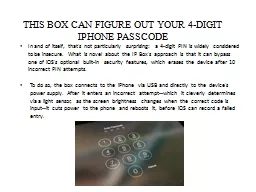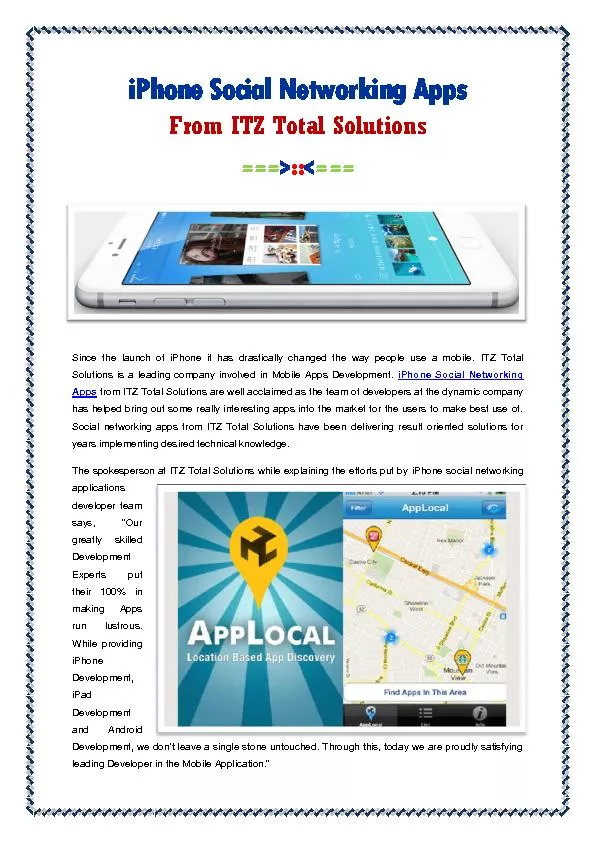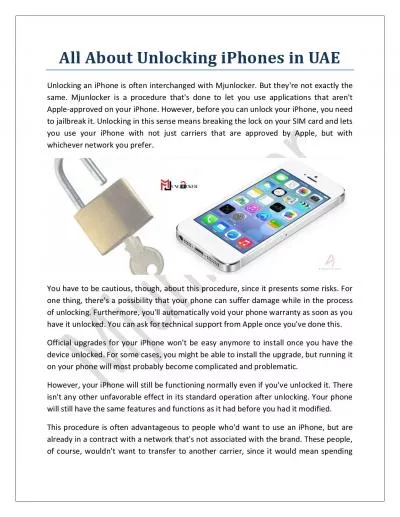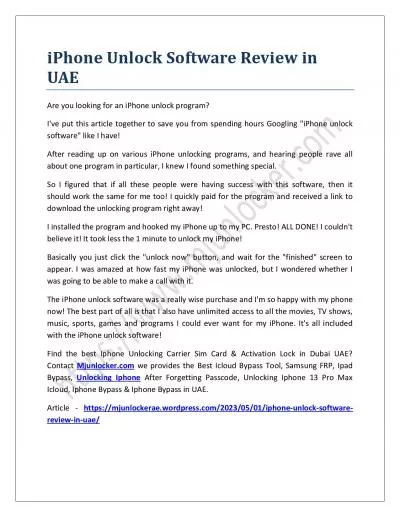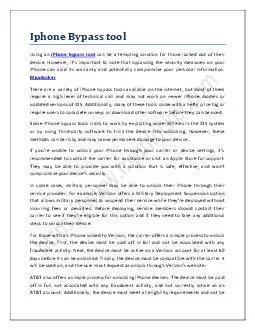PPT-THIS BOX CAN FIGURE OUT YOUR 4-DIGIT IPHONE PASSCODE
Author : tatiana-dople | Published Date : 2016-05-25
In and of itself thats not particularly surprising a 4digit PIN is widely considered to be insecure What is novel about the IP Boxs approach is that it can bypass
Presentation Embed Code
Download Presentation
Download Presentation The PPT/PDF document "THIS BOX CAN FIGURE OUT YOUR 4-DIGIT IPH..." is the property of its rightful owner. Permission is granted to download and print the materials on this website for personal, non-commercial use only, and to display it on your personal computer provided you do not modify the materials and that you retain all copyright notices contained in the materials. By downloading content from our website, you accept the terms of this agreement.
THIS BOX CAN FIGURE OUT YOUR 4-DIGIT IPHONE PASSCODE: Transcript
Download Rules Of Document
"THIS BOX CAN FIGURE OUT YOUR 4-DIGIT IPHONE PASSCODE"The content belongs to its owner. You may download and print it for personal use, without modification, and keep all copyright notices. By downloading, you agree to these terms.
Related Documents

